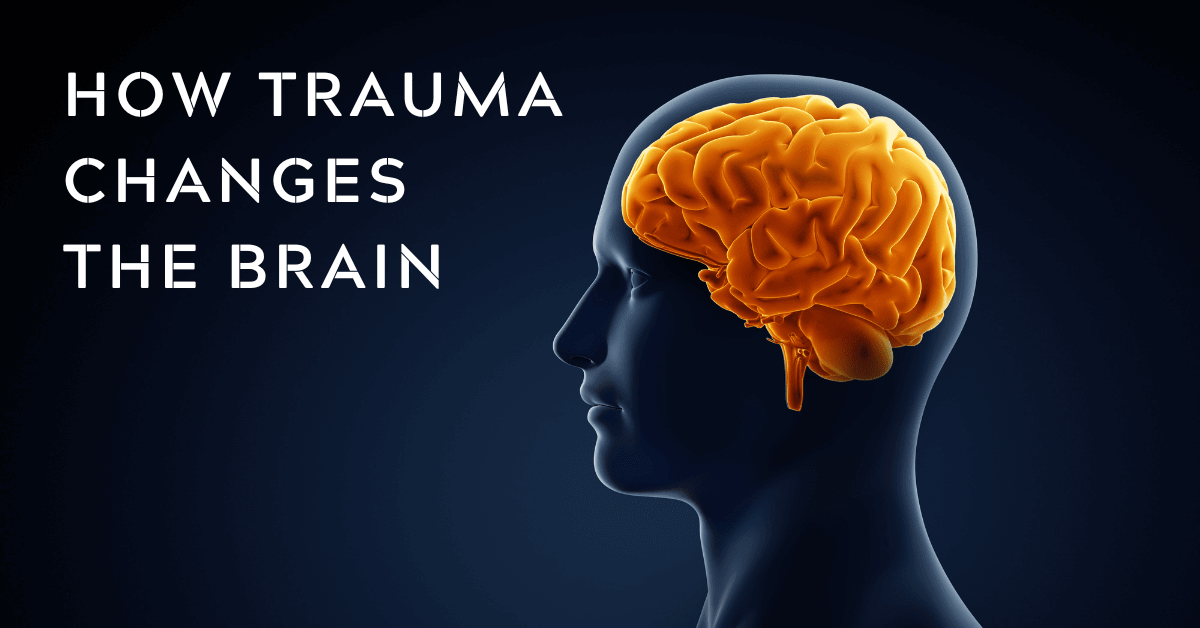Traumatic stress can drastically change the brain’s chemistry and structure. Depending on the type of traumatic stress, these effects can range from minor to severe impacts on the ways we function; from heightened anxiety and difficulty managing emotions to impulsive actions and PTSD, these changes are symptoms that can occur after a traumatic and stressful event.
Especially for Veterans, trauma responses and PTSD impact daily life in detrimental ways, but how exactly does trauma affect your brain, and what effects does it leave behind? There are dozens of symptoms associated with PTSD: insomnia, nightmares, flashbacks, irritability, negative thoughts and feelings that could lead to suicidal thoughts, depression, and anxiety are just a handful. During National PTSD Awareness Month, we want to help raise awareness for people suffering from Post-Traumatic Stress Disorder and show survivors across the country that it’s not a bad thing to get help when you need it. PTSD and trauma are often considered “invisible” wounds, but they can have a major effect on our brains and bodies. Here are three places in the brain that trauma physically alters, as well as a few resources in order to help Veterans and other PTSD sufferers find ways to get assistance.
- The Amygdala
The amygdala helps regulate how we respond to emotions and tackle fear, as well as emotional memories. Traumatic stress over-activates the amygdala, and as a result, our fear responses become more intense; memories of traumatic events become nightmares that interrupt sleep and flashbacks that can prevent us from functioning in daily life. An overactive amygdala can also lead to chronic stress, increased irritation, insomnia, and restlessness. When we are reminded of a traumatic event, the overactive amygdala responds in the same way as if we were experiencing that trauma for the first time– again and again, despite how the traumatic event is over. This reaction makes us feel constantly on edge, constantly stressed and on high-alert when the traumatic event has long passed.
In order to help relax the overactive amygdala, regulating your breathing can be a very powerful tool to master. Work to slow your breathing down to a calm rhythm that feels natural, and focus on how your body feels as you breathe. Acknowledging that your body feels this way, rather than trying to ignore it, can help you push past the trigger and take stock of your feelings. After you’ve calmed down, think about what activated the response, how you felt during the panic, and consider how you can avoid the trigger in the future.
- The Prefrontal Cortex
The prefrontal cortex helps us interpret our emotions, control impulses, and solve complex problems with reasoning. Studies show that traumatic stress can decrease functionality in the prefrontal cortex, meaning that our ability to solve those complex problems and manage our emotions decreases in skill. As a result, logical thinking becomes much more difficult, and we become incapable of controlling our fear. Normally, the amygdala will sense a negative emotion, and the prefrontal cortex will create a reaction to this emotion– after a traumatic event, the rational reaction to that same emotion is overridden, and the prefrontal cortex struggles to regulate fear from other emotions. As a result, all negative emotions come with a side of fear that cannot go away, even if you feel safe in the moment.
While calming down the prefrontal cortex during a stressful moment that doesn’t require a fear reaction isn’t easy, it is possible with some of the same methods as relaxing the amygdala. Rational thought and deep breathing can help relax the entire body and send reassurance to the brain that the situation doesn’t require such panic. In time, the body will recognize that not every emotional reaction requires fear, and your emotions will regulate themselves.
- The Hippocampus
The hippocampus stores and retrieves memories, which helps in telling apart the past and the present’s experiences. Studies show that experiencing trauma and increased levels of stress decreases the volume of the hippocampus, making it hard for us to distinguish the past from the present. As a result, if we’re reminded of traumatic experiences, the memories of such experiences are at the forefront of our minds, and we stay in a constant hyper vigilant state with intense emotional reactivity to go along with it. Some memories may be incredibly vivid and very sensitive to remember, especially in environments that may trigger an emotional response linked to the memory. The fight-or-flight response is activated due to the brain’s perception of that same threat, even though it isn’t there. The body is always in a state of panic, remembering the traumatic event or experience as if you were living it over and over again.
Reassuring yourself that not only is the threat gone, but that it cannot affect you now helps the brain realize that you are not in danger at that moment. As with the amygdala and the prefrontal cortex, deep breathing and rationalized thought will help calm the body down from an anxiety or panic attack caused by these reactions. Thoughtful and rational responses will come easily after your body releases the excess adrenaline; if you still feel emotional while considering these things, give yourself patience and more time to relax. Reasoning and mindfulness are two skills that take time and practice to master, but can ultimately be a huge help in relaxing your body after trauma.
There are also external ways to help the brain recover from traumatic experiences. Therapy and counseling will assist in providing resources on how to get past debilitating trauma responses, and with therapists with a high level of expertise in how to treat PTSD and trauma, survivors will receive personalized plans to help them recover. Operation Red Wings Foundation works exclusively with Veterans to allow them to work through their trauma alongside fellow Veterans and trained therapists who are ready to help them. We also have multiple resources to help Veterans find what they need before visiting our programs, whether in-person (in our Texas and North Carolina locations) or virtually.






